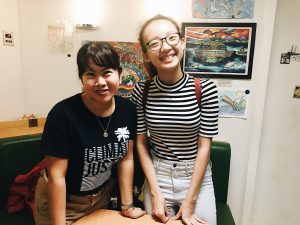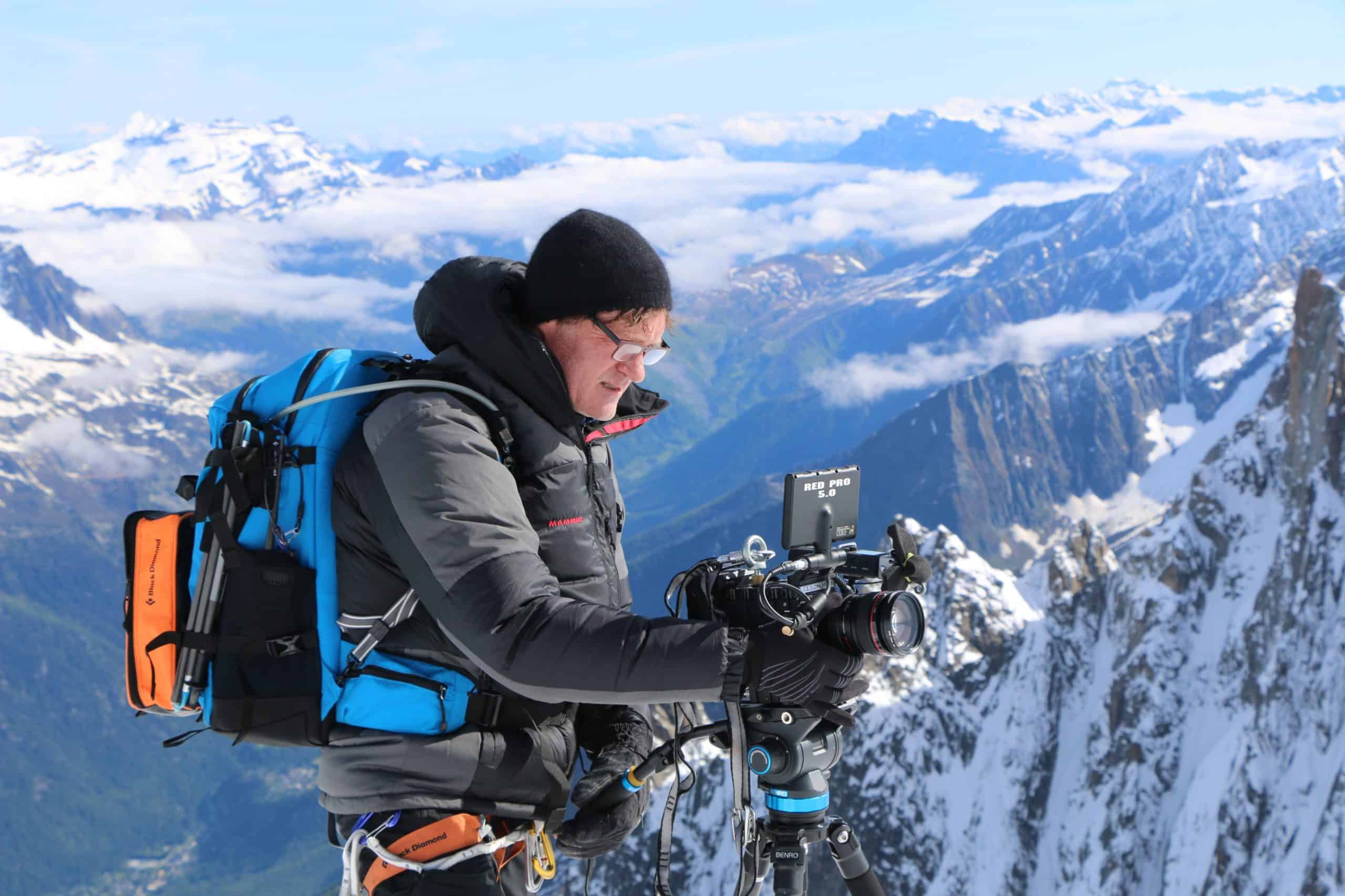Rainbow Warrior, an indisputable icon for environmental activism, has patrolled the world’s oceans since 1978. Join us on this journey to get a rare glimpse of the sights and sounds of the Rainbow Warrior as she cruises through Southeast Asia for the first time to spread an important message.
While docked in Singapore, we spoke with Therese Salvador, the Media Officer for Greenpeace Southeast Asia to find out about this green warrior-ship, what life is life on board and how they incorporate sustainability on board.
Greenpeace exists because this fragile Earth deserves a voice. It needs solutions. It needs change. It needs action. – Therese Salvador
Greenpeace’s iconic ship, the Rainbow Warrior, made her debut on Singapore’s shores on the 30th of May 2018. As her first public appearance in Singapore, it is not surprising that tickets to her public event sold out within hours of the release as curious Singaporeans from all walks of life, environmental activist or not, ached for a closer look at her majestic beauty.

Therese got involved with Greenpeace very early on in her life, starting as a donor in high school where her first charitable act was donating to support Greenpeace’s cause. With a background in Advertising, it is apt that she now holds the responsibility of Greenpeace’s media work, storytelling and writing stories for Greenpeace that reaches out to the world. Rita, a deckhand (she’s the coolest), brought us around and shared stories about the Rainbow Warrior. Work in Greenpeace is never the same, and there is always something new to do.
Boy oh boy is Rainbow Warrior’s history an exciting one. Rainbow Warrior 1 was bombed in 1985 by French foreign intelligence services, and Rainbow Warrior 2 was given away to become a floating hospital in Bangladesh. Today, we have Rainbow Warrior 3.
GREEN IS THE NEW BLACK: What’s the story behind Rainbow Warrior, Greenpeace’s most iconic ship?
THERESE SALVADOR: There are 3 ships that travel around the world for Greenpeace’s campaigns, but this one is the most iconic because it carries the Rainbow Warrior name. The name, Rainbow Warrior, has a very mythical origin. There is a native American story that says that when the Earth is in trouble, warriors of the Rainbow will heal it. And that’s how the name was derived, this ship holds that hope that people who are sailing with it will help the environment which is why it goes around the world to raise awareness of environmental issues.
How sustainable is the Rainbow Warrior?
The Rainbow Warrior was built with environmental sustainability in mind. This ship has sails and uses wind power most of the time. Compared to other vessels, she doesn’t burn as much fuel as an ordinary vessel of this size. The crew and staff are also very strict with the ship. With a proper waste management system, they segregate trash and are very strict about plastics. They even have this wooden contraption to help crush their cans, way cool. Therese shares “when it comes to food, only sustainably-sourced produce is loaded. We also only eat meat once or twice a week, eating mostly vegetarian meals to help offset the carbon footprint.”

Why is Rainbow Warrior visiting Southeast Asia?
For Southeast Asia, Rainbow Warrior’s arrival was really about climate change and people power. We went to diff areas where there are problems. In the Philippines, we went to Tacloban, found slightly South of Manila, where in 2013 the strongest storm on Earth hit that province. It was a clear example of climate change affect people’s lives because 6000 people died and even now, the province is still recovering. When you’re there, you will see the damage of the storm surge, you see where people lost their homes and loved ones. When we were there, it was there to be in solidarity with the local communities that were affected. We held a week-long event there and opened the boat to survivors and to have discussions on climate change and how they can move forward.
In Thailand, it was in a province called Songkhla where the communities were affected by this coal-fired power plant that was going to be built despite people saying no to it. It has been a 3-year long battle between the community and government. Rainbow Warrior was there in solidarity with the people to help raise their image as the ones opposing the coal plants. Rainbow Warrior is always there for people who need support whether it is for media publicity or lobbying with important people.
In Indonesia, Rainbow Warrior went to very remote islands that are very inaccessible for travelers. She went to places that were iconic, took photos and videos to document places where deforestation was happening. We call this work, “bearing witness”. Ordinary people won’t get to see this unless someone takes a photo – so that’s what the ship does, it becomes a medium for documentation and investigation. Without Rainbow Warrior, we won’t be able to tell these stories to the world.”

What action has Rainbow Warrior joined or initiated of in Southeast Asia?
Greenpeace is known for taking action. In Indonesia, Rainbow Warrior helped stop a coal barge and made the coal industry aware that they’re not supposed to pass through that area as it is already very vulnerable. We always consult the local community to find out what help they need from us. We have this image at sea where we have the Rainbow Warrior with different fishing vessels around it, it’s a powerful image that draws people’s image to the issue. So we plan for these things because we want to maximize the ship, we take nice photos and videos so that more people will see it complements the story.
We do get our share of criticism, especially from affected industries because they are not happy with us naming and shaming them. But it is part of our work, we are used to that. To us, as long as people support us and as long as people need us, we will continue to do those things and we will campaign.
One of Greenpeace’s core values since the 70s is non-violence. We occupy, but we don’t destroy anything or attack the people who are working or belong to that area. We make our presence felt by holding signs. Remember Gandhi? Ge was doing hunger strikes to raise his point, and we do the same. We will be here, we will hold our banner and stand our ground but we will not be violent. There are other forms of activism like online activism and petitions. When we do activism, it’s usually the last resort when all else has failed and we just want to make a strong point for the rest of the world to take notice.
When we were in the Philippines, we campaigned at Shell’s Batangas Refinery to make a point on climate justice in February. We occupied the jetty and I stood there for 4 hours, with Rainbow Warrior hovering and watching over us nearby. We stood there and carried our messaging and we had media with us. These kinds of activism actually work because people only realize this seriousness of the issue when they see our photos. We always do our research, and these campaigns always begin with intel because we can’t just go and do our thing without considering the cause-and-effect. It was a peaceful protest because no one got arrested or hurt. We are never violent; we just want our messages broadcasted. To prepare for this, we had to go through a lot of mental, physical, emotional training. Nobody goes to battle without training.
What’s the biggest environmental problem facing Southeast Asia?
Unfortunately, in Southeast Asia, we don’t love the environment. We consume a lot of things and think “oh I need to buy this”, we are very driven by consumerism. I think that affects how we use and how we abuse the environment, for example, we are one of the biggest generators of plastics. We see that at sea too. Last year, Rainbow Warrior took survey samples of water in the Mediterranean and found a lot of plastic pollution, and many of those were probably from Southeast Asia because the plastic floats over. It’s very alarming considering that people still think that they can just use plastic straws for a few seconds without thinking about the environment. This culture of convenience that is one of the root causes. There is also apathy.
People think that the environment will fix itself, because they are so busy with their lives and work, and have little time to consider that even their food choices affect the Earth. It’s those small things that people don’t realize unless somebody tells them what is wrong or unless they are affected by it. In the Philippines, we get plenty of rain and the streets get flooded because of plastics choking the sewage. It was only when this happened that the government took notice and realize that they need to resolve the plastic problem. People had to be affected by the flood before taking any action. It is difficult to get people to care. If it were easy, we wouldn’t have to exist. But there is hope because we see people who are interested in the work we do and want to support us so it’s just a matter of having the right channels and telling stories of what needs to be done. This is why our ships are important because when they are in town, people get excited and curious about what Greenpeace is all about and then they realize the importance of caring for the environment.

How can individuals take action and ownership of the problem?
We shouldn’t underestimate what ordinary people can do, never underestimate the power of how you can change your little circle. Within my social circle, they usually see me post about issues on plastic and coal plants, and when they see it in the news, they slowly learn about the issue and how it affects them daily. When we go out, I always reject straws and ask for real cups or glasses for my drinks. When they hear me say it, they themselves will say it too. Soon, they’ll do it with their other friends and this effect multiplies. Having that consciousness of “I will bring my snack in a reusable container or use an eco-bag when I purchase or say no to a bag”, are the simple ways individuals can make a change that goes a long way.
Greenpeace is one of the few non-governmental organizations that get donations from private individuals and not corporations/government. We want to maintain independence to be able to tell a corporation that they are doing harm to the environment. If you have a billion dollar industry giving you money, how can you be effective in telling them to stop harming the environment? Our donors come from all walks of life, and some may be earning just enough to get by but they still give us part of their salary. That’s why we have to earn that trust and give back to make sure that their donation goes a long way.
It is important that you study environmental issues so that you know the best practices to be able to convince other people about what should be done for the environment. Some may say “oh let’s just incinerate plastic to get rid of it” but that’s not good for the environment. And for some coal plants, they would say “it’s clean coal” – there’s no such thing. There will be “fake news” telling you things about the environment. You really have to learn and read a lot about the issue to be able to be an effective spokesperson, and also walk the talk.
Final words of wisdom?
The Rainbow Warrior reminds us of one thing, that we are not alone in our journey towards living greener, more sustainable lives. Our Earth’s health depends on us, and we are all in this fight together for a friendlier future no matter which end of the Earth we are at. Here’s to the conscious people!
Don’t let your conscious journey end here! Get a weekly dose of inspiration, knowledge, and action delivered right to your inbox, join the conscious movement here.


